Confessions of a Female Badass is an ongoing column at Curtsies and Hand Grenades where I discuss women in genre cinema.
[TW: Discussions of Rape, Rape Revenge Movies and Rape Culture]
Exploitation cinema addresses difficult subject material with a directness not usually gifted to mainstream filmmaking. At its best these kinds of movies ask questions of viewers and unsettle their cultural ideas of sex, race, gender and class. Rape is not a stranger to cinema, but it is uncommon that this topic is handled with immediacy, concern and grace. Rape-revenge movies must have an understanding of the psyche of the abused, and facilitate this through camerawork and character depth. The person’s (almost always a woman) fight for justice needs to be paramount, and their agency within the narrative has to be a concern. The Female Prisoner Scorpion movies don’t always understand how to go about balancing their exploitation duties to pinku cinema, and rape-revenge to their righteous women’s anger, but frequently they find a balance of expressiveness and strength at the centre with the help of Meiko Kaji (Scorpion). Kaji (Scorpion) is a performer whose eyes emote more than dialogue ever could and her stoicism, determination and weathered life experiences gift the Scorpion films a character who viewers can identify with and follow, even when scenes are hard to bear. It is in her eyes that the Scorpion films find their power as vengeance pictures, and in Jailhouse 41 Scorpion evolves into a figure whose acts of reprisal become mystical. What is only hinted at in Female Prisoner #701: Scorpion becomes gospel as Scorpion becomes the blade for all women.
Director Shunya Ito understands that this is Scorpion’s movie and nearly always has her point of view in mind. In the first moments of Jailhouse 41 Scorpion is hog tied once again in the pits of the prison in what I described as “dank hell” in my first piece on these movies. Scorpion is seen dragging a spoon across the rock floors and refashioning it into a primitive knife. She does this knowing it might be her one way to escape or to strike back at the warden who captured her and sent her back to prison at the close of the first movie. In these scenes the camera is looking up, just as Scorpion would be and the image is of the Warden Goda (Fumio Watanabe) and his men standing above Scorpion. When it is announced that Scorpion would be taken outside along with the other women to meet a dignitary from the state who is coming to check up on the prison she is “cleaned” with a fire hose. Her face breaks in these moments and she shows vulnerability. The cracks in Scorpion’s armor are important to make her a relatable figure instead of a superhero and amplify the anger audiences are supposed to feel with the cruelty of the warden and his men. Ito smartly frames the hose sequence no different than Scorpion’s introduction and the lens is filled with splashes from the water. The camera takes the place of her body.
The effect of Scorpion’s previous escape from prison has made her a legend in the eyes of the women alongside her. Tales of the revolt that came at the hands of her unwillingness to break in the face of the steepest of punishment have spread and they speak of her in hushed tones like a god waiting to be unleashed from her shackles and roam free again. She represents the possibility of being free and unburdened with the abuse they’ve suffered at the hands of the men who oversee them in jail. She is a perceived god of possibility and an arbiter of their future. Scorpion is a slippery figure who seems to find her way wriggling to freedom when given an inch of room to run, and the women inmates know this fact about their fellow incarcerated sister. When they see her emerge their faces are of shock, jubilation and excitement. Already Scorpion is becoming a leader among women, but there is one woman named Oba (Kayoko Shiraishi) who remains unimpressed with Scorpion. She carries a scowl on her face and contorts herself into broad theatrical expressions throughout the movie. A natural rival to both Kaiji and Scorpion.
After a failed murder attempt on the warden with the knife she carved during the opening credits Scorpion and the other women are sent to a biblical punishment of dragging rocks tied to their backs and in Scorpion’s case carrying crosses. The blocking in the punishment sequences is always fascinating, because it carries the sense of space and the hierarchy of the inmates versus the guards. Notice in the first screencap the men are all standing high above the women with guns held high in standard police uniform. They’re perfectly coiffed and untarnished by the dirt, dust and clay of the rock field. The women, in contrast are hunched off, caked in filth and below the men. The scorpion films use blocking to investigate hierarchy and these are most striking in large spaces. In the first film Scorpion is asked to dig a hole until she drops and like this scene with the rocks she is literally underneath the feet of her oppressors.
Scorpion’s cross-carrying is no small coincidence either. Her presence as a saviour to the masses is well known and this alignment with Christ gives her iconography that is known worldwide. Scorpion, however, is not a martyr or a saint. She’s a murderess with a justified hand. But even the punishment of Christ is not enough in the eyes of Chief Warden Goda. Goda insists that Scorpion must be broken, and a punishment not befitting of her will only turn Scorpion into an idol. Goda orders his men to publicly gang rape Scorpion in front of the other women.
Scorpion’s gang rape is the most difficult scene to witness in the movie, but it gives fire to her later actions. It is made more cruel and vile, by Goda’s decision to force the other women to watch Scorpion be publicly raped. One woman, who is unnamed, falls at the sight of this, because it’s too much to bear. Ito treats the sequence for the horror that it is by never shying away from the vileness of the act. The woman who breaks is key to understanding how much of a struggle it is to watch scenes like this as a female viewer. It’s a meta-decision that informs the women who view this film that Ito understands this is despicable to view, and it also works as a plot mechanism because it undoes Scorpion’s hero status in the eyes of the women, because she is brought down to their level through the gang rape. Formally, the rape is shot similarly to rapes in the first film with a focus on Scorpion’s face and the continued usage of the camera as a point of view tool. The rapists are never given control over the image and whenever they do appear in frame their faces are demonic, crushed under pantyhose and sniveling. They show no human characteristics. There is also never a clear frame of penetration in this scene, but in the sunglasses of the warden four figures are seen moving around Scorpion. The mind makes the scene far worse, because of the implied nature of the act. By suggesting the violence of the rape Ito sidesteps sexualizing it leaving it up to viewers to think about what’s happening and question our ideas of what rape looks like and what rape is, which is a far more complex shot than bluntly showing the act of sexual violence. It is also a smart usage of the camera to artfully sidestep what is expected of the genre expectations of the film. At the close of the scene in slow zooms and cuts Scorpion locks eyes with the warden and as is her carrying card she marks him for utter vengeance. The act of extreme close-up gives Scorpion some level of agency in a scene where all agency is taken. Her eyes signal a foreshadowing that this scene will not go unpunished.
To fully break the girls spirit warden Goda tells two of his men to kill Scorpion while they’re headed back to the prison, but she thwarts their attempts and Scorpion’s rival Oba kills the second guard. Preceding their escape there is a difficult scene of the other women attacking Scorpion. With their faith in Scorpion’s ability to lead them to safety they kick her repeatedly. The camera spins around their attacks quickly, blurring the image, and their screams and frustrations are heard. This isn’t a direct attack on Scorpion, but an attack on their patriarchal situation. This is an assault of failed hope and dashed dreams, and Scorpion’s relationship with these women is flawed from this assault. The Female Prisoner Scorpion films address infighting between women, but do so by framing it as a product of men stoking the flames of their relationships. Men have access to the power in these movies, and represent an abusive, evil, patriarchy and the women in these movies fight for what little amount of privilege is granted. The women are prone to hierarchy and judgment and when confined within a closed space such as a prison fighting is natural.
Before the women flee they make a scene of one of the guards who tried to kill Scorpion. They maul his body, disrobe him and with legs splayed they plant a giant plank of wood directly into his genitals. It’s a graphic image, and perhaps the bloodiest in the series. It’s an image of specific meaning due to the camera’s lingering presence. It’s lit in a way that makes it clear blood is gushing up from his wound and we see the full extent of his mangled body. In the Female Prisoner Scorpion films when women are raped the camera rejects the sexualization of the subject by never showing the full extent of the act of rape, but instead uses reaction shots and close-ups. Those scenes are made disturbing by the power of the actors faces, and that is a clear rejection of typical filmmaking techniques for rape that focus on the female body. This image of a defiled man is made powerful by contrast in the the destruction of his body in a physical, visible way. It’s angry, violent, impure, but radical in context of the rape-revenge movie and in how Scorpion functions as a series of movies in this genre.
Unlike in the previous Scorpion film the surrounding characters of Scorpion are given a backstory. In Jailhouse 41 this is accomplished through a psychedelic fantasy sequence that utilizes traditional Japanese theatrical techniques and beautiful high-contrast colours. The seven escaped prisoners come upon an old woman in their journey and when they fall asleep later that night she narrates their story. Each woman has been sent to prison due to a crime associated with men. Some of the justification for these crimes hasn’t aged as well, especially the one regarding jealousy, but all of these stories fall in line with the universe of Scorpion where men do women wrong. Oba gets the the densest of these revelations as she murdered her children when she caught her husband cheating and couldn’t bear to know she brought something of his into the world. Oba’s narrative is the most complicated, and her later actions make her evil in a way that requires a true test of empathy from Scorpion. She too has been wronged, but she has done some wrongdoing herself. For Scorpion to be an avenger of all women she has to be an avenger of a woman like Oba as well.
When the old woman eventually dies the next day she gives Scorpion a blade that endows her with mystical ability. Scorpion takes the blade and rakes it across her eyes in a fluid motion (Ito’s homage to his own favourite director Luis Buñuel), and this image would be her rallying cry for movies to come. Scorpion’s hair rises and she’s lit in a flame scorched orange silhouette, but unlike the scene from the Female Prisoner #701: Scorpion this scene signals her mystical powers as a vengeful reaper of all women, and not merely a tool for her own vengeance. The balance of Scorpion’s heroism and vulnerability tips over in this sequence. From this point forward Scorpion would be less of a Woman and more of a symbol. It’s a bold choice for the complicated people she must fight for, and the reliance on her earlier vulnerability makes her a hero who deserves power. She is an underdog who has risen into a force.
The Female Prisoner Scorpion movies have a deft eye for critical evaluation of their audience. Being in the pinku genre Ito knows the audience who would go to this movie and casually inserts an image of an offended woman overhearing men discussing sex with women who had just escaped form prison. Her look of disgust is the moral heart of these movies. At their centre the Scorpion films pay notice to the women characters and how they interact with men. Not to let the men see her reaction she quickly reaches for a smile to diffuse any possible negative outcome, which is something women are trained to do in the company of unbecoming men when we grow up.
Oba is perhaps a character who exists as criticism of the women in the audience who view Scorpion as a hero. Oba is the likely scenario of how offended men would view Scorpion in the first place so her more brazenly evil tactics are a focus. Oba works as a counter-point to Scorpion’s righteousness. She is more coarse and complicated in her hatred of not only men, but human beings. Oba strips women, steps on men and uses hostages as target practice in their lengthy escape. She’s an individual who is beyond damaged and throws Scorpion to the police to save her own ass later in the movie. It is perfect that Oba and Scorpion would stand together in the end as Scorpion learns to have compassion for someone who hated her guts.
Scorpion’s compassion for Oba is beautifully rendered in their final moments. Before Oba dies she relives the moment that sent her to prison. Her face is less severe and she carries a deep grief in her expression as she plunges a knife into her womb aborting her unborn fetus. In a striking image of abortion stigma a net is thrown over her and people prod her with sticks as she bleeds out. When Oba comes to Scorpion catches her and for a second Oba drops her defenses and rests in Scorpion’s arms. Finally, she lets down her armor and breathes, because she knows her torment is nigh over. Scorpion stares at her and their eyes meet. Scorpion didn’t have to catch Oba, but she did, and despite all of the vicious things Oba had done in the past she helped a woman in need. In her great empathy Scorpion carries Oba until she expires. She closes her eyes and lets her move onto the next world and Scorpion weeps. The message of unity among women crystallizes in this moment, because everyone has a backstory and moments that cause their own problems. It’s our duty to try to understand why.
The blade from the old woman was always ours to share, and the blood of our peace washes us clean. Scorpion sprints in the final moments of Jailhouse 41 with an army of women behind her. Her evolution into feminist totem carries weight in this moment, because she isn’t seen as a solitary figure reckoning with her own personal needs, but the needs of many. When the blade passes hands it’s a symbol of not only our collective spirit towards a common goal, but that we cannot do this alone. It would take all of us. It’s an empowering fruitful image to end a movie on and an undeniably feminist one in the context of the world this movie exists within.
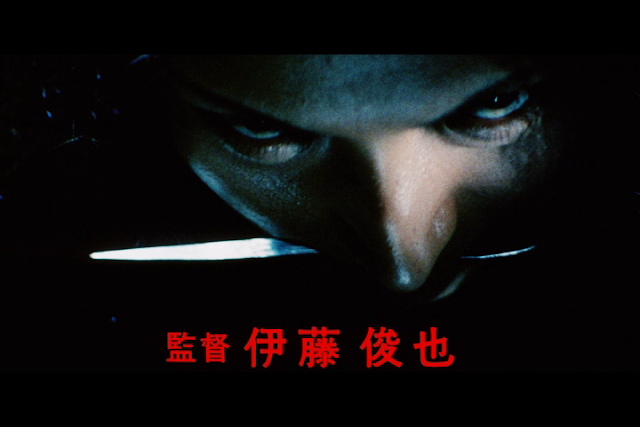

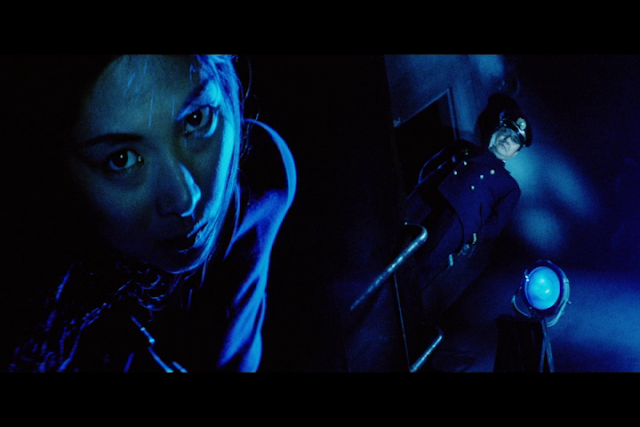


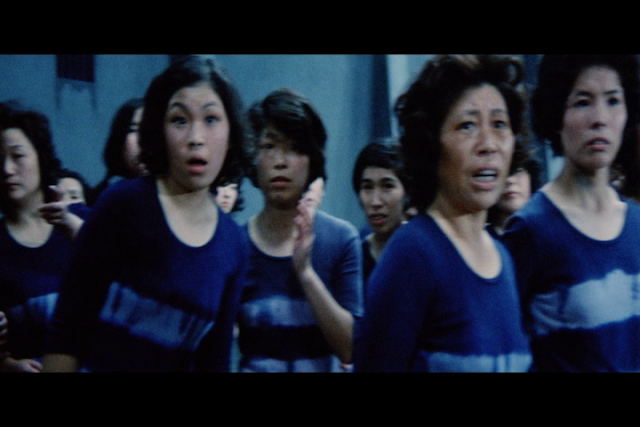



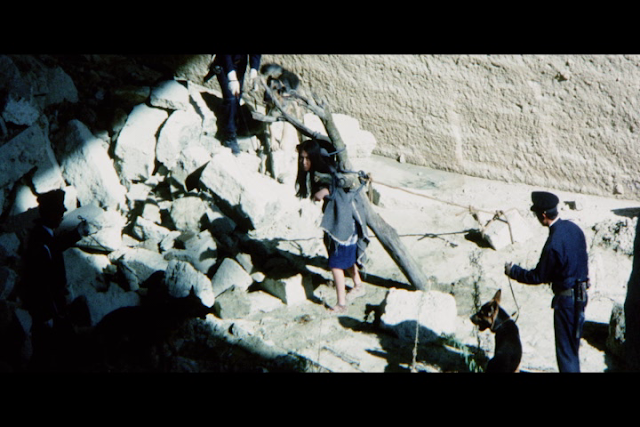




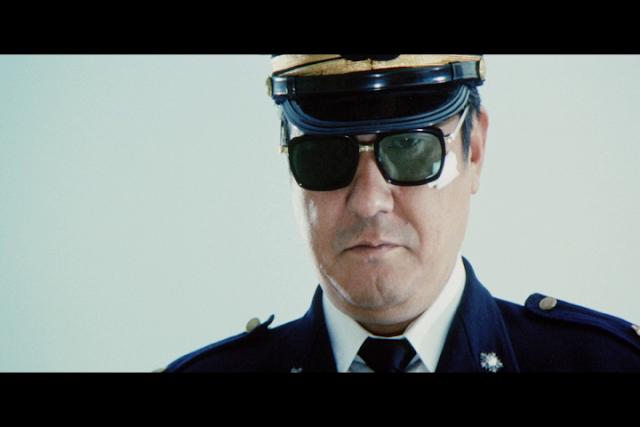
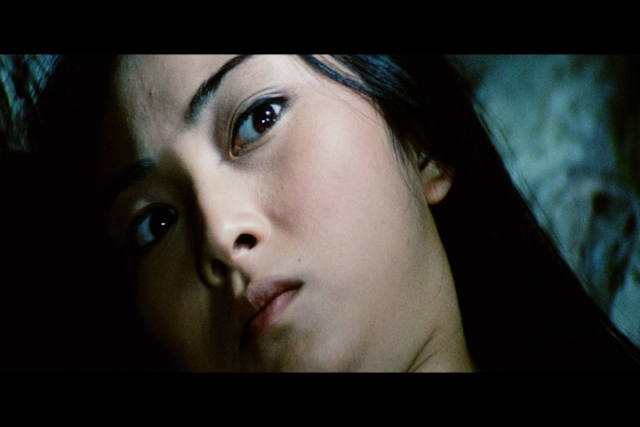


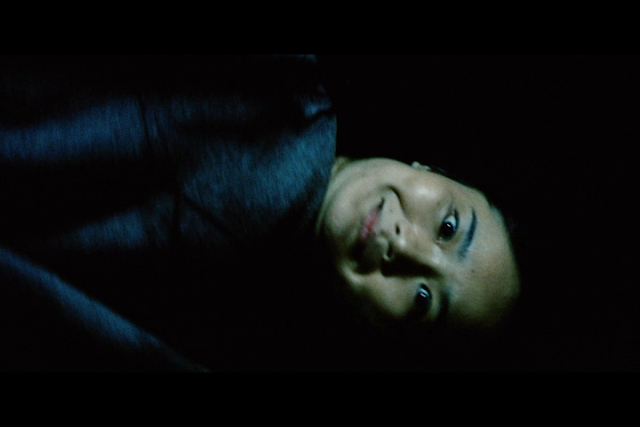
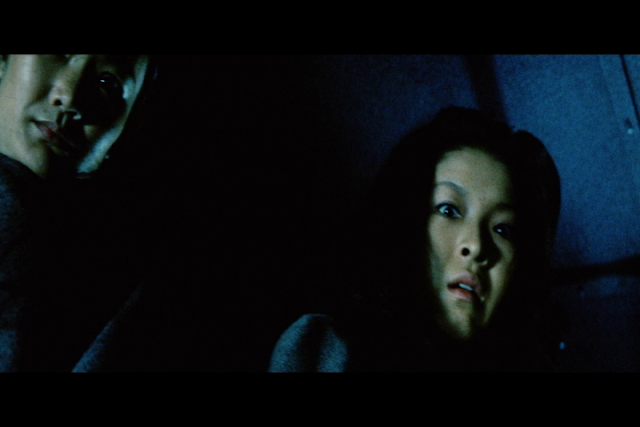

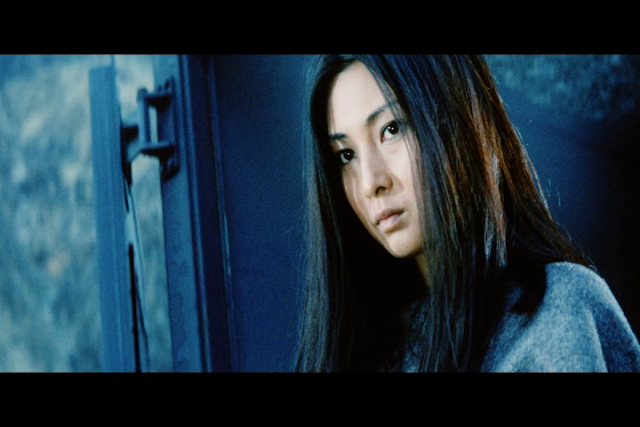
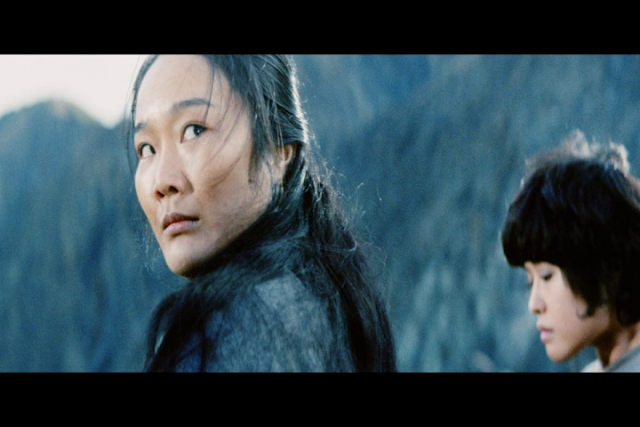
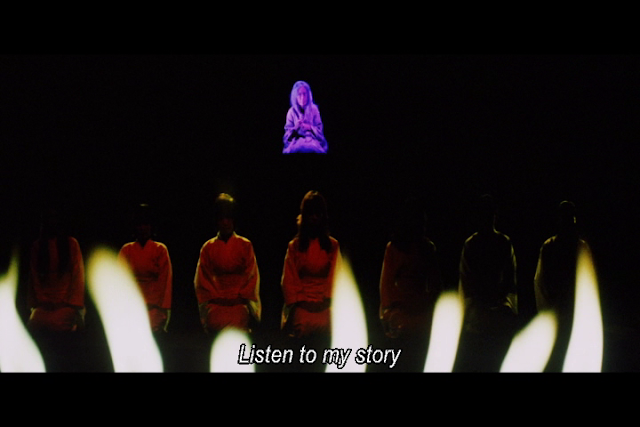







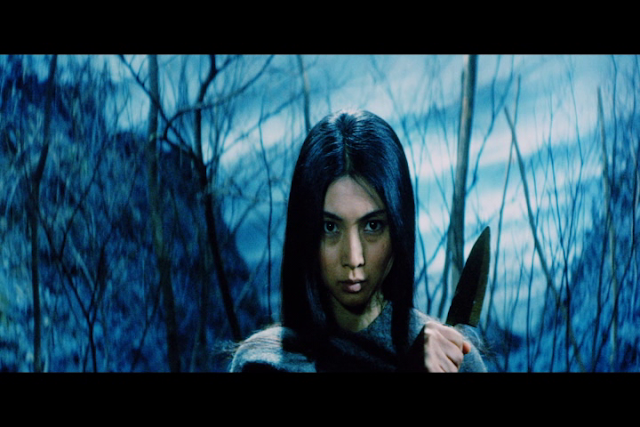
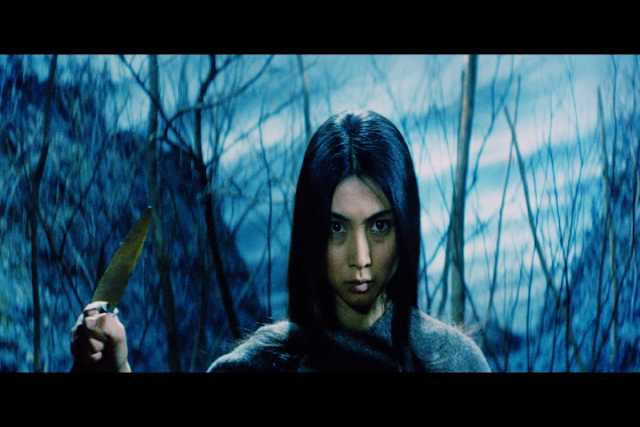


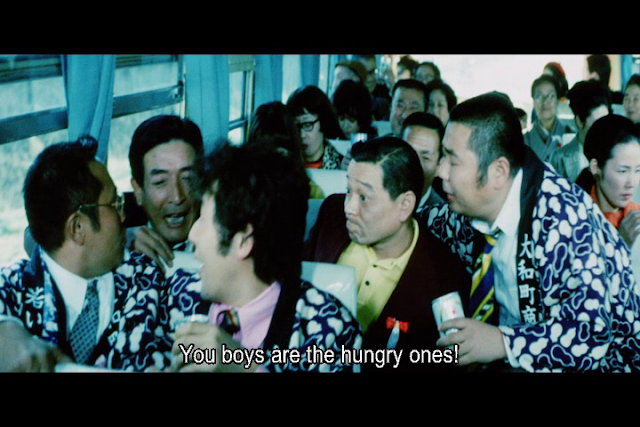

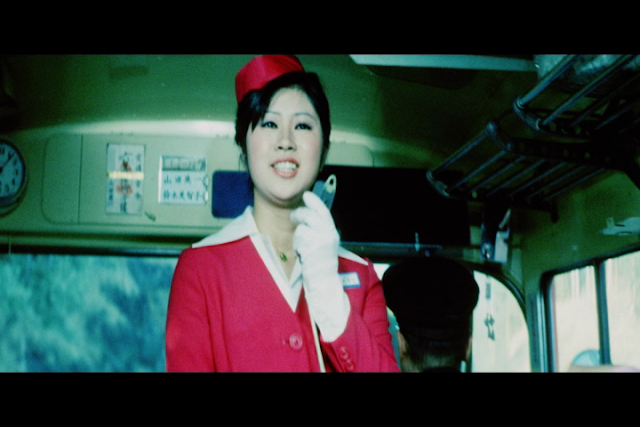
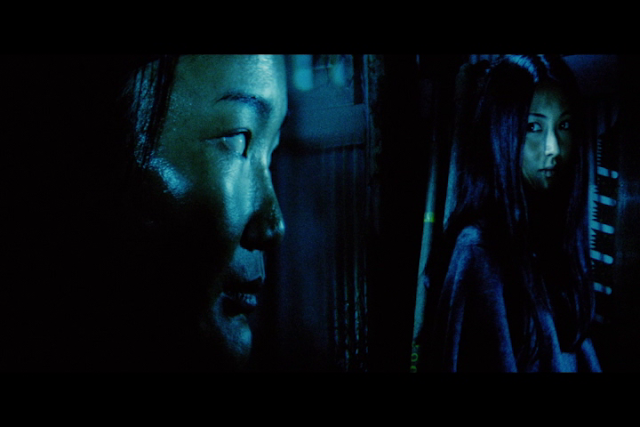


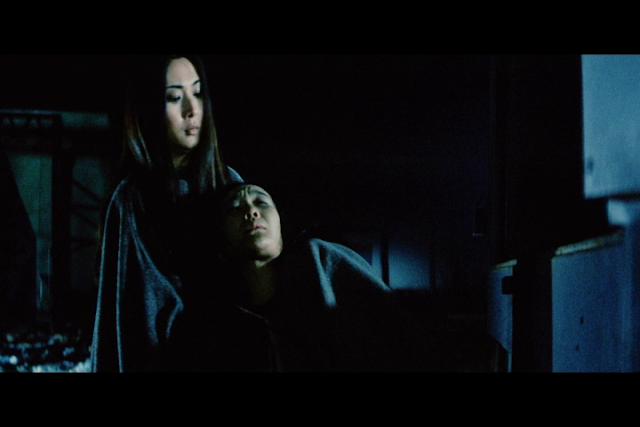
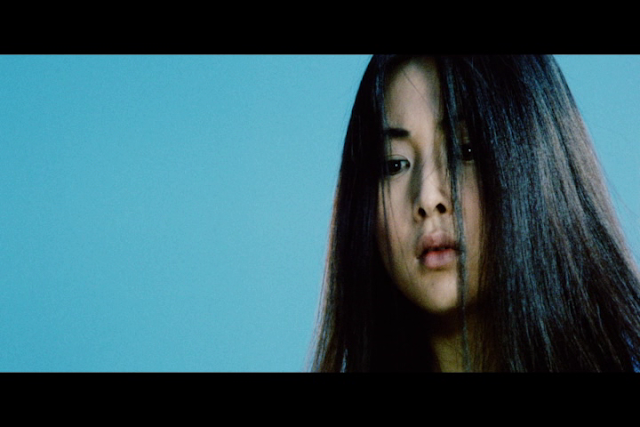

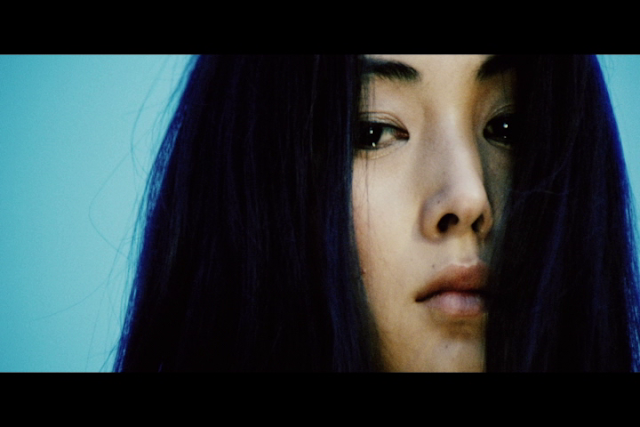
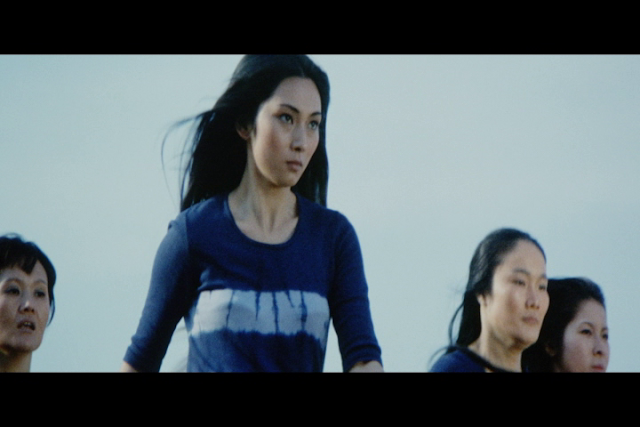
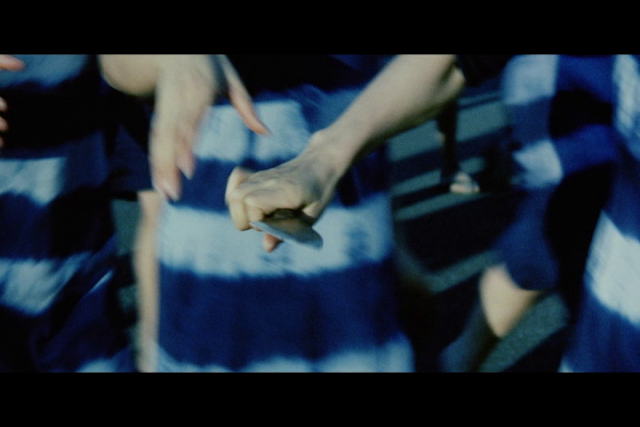


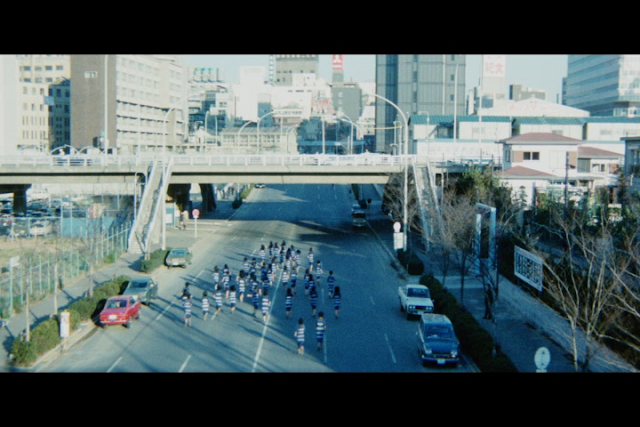
Be First to Comment